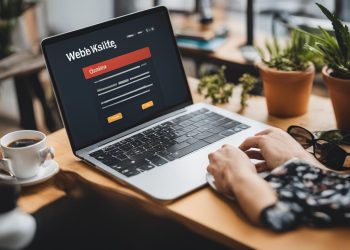Think of your website as an intricate jigsaw puzzle. You wouldn’t just carelessly toss the pieces around, would you? Every component of your website needs to integrate flawlessly to successfully guide users to you via search engines.
You’re navigating the digital landscape, where the relevance of your site hinges on well-executed on-page optimization. It’s a blend of art and science that requires attention to detail, from the precision of your title tags and meta descriptions to the structure of your headers and content.
You’ll need to optimize images and multimedia, ensure your URLs support your site structure, and focus on internal linking strategies. A commitment to mobile responsiveness and user experience is non-negotiable in this pursuit.
As you refine these components, you’re not just enhancing your site; you’re elevating its potential to connect with your intended audience.
Key Takeaways
- Keyword research is essential for on-page SEO. It helps in identifying relevant keywords that can be incorporated into the content to improve search relevance.
- Keeping the content fresh and updated is important for on-page SEO. Regularly updating the content can help improve search rankings.
- Page speed is a crucial factor for on-page SEO. Optimizing the website’s loading speed can enhance the user experience and improve search rankings.
- Utilizing schema markup can help search engines understand the content better and improve the visibility of the website in search results.
Introduction

As you embark on enhancing your website’s visibility, it’s crucial to understand how OnPage SEO serves as a cornerstone in digital marketing strategies.
You’ll need to scrutinize each element of OnPage SEO, recognizing its direct impact on your site’s ranking and user engagement.
Grasping the nuances of OnPage factors, from meta tags to content quality, is pivotal for devising a plan that propels your online presence.
The Role of OnPage SEO in Digital Marketing
OnPage SEO serves as the strategic foundation that can propel your website’s visibility and user experience to new heights in the digital marketing arena. It encompasses critical elements like keyword research, ensuring that your content resonates with what users are searching for. Content freshness keeps your site relevant, while page speed optimization ensures a smooth, quick user experience. Social signals and schema markup further communicate your content’s value to search engines, enhancing your site’s discoverability.
| Factor | Impact on SEO | Considerations |
|---|---|---|
| Keyword Research | Directs organic traffic | Use relevant, high-search volume terms |
| Content Freshness | Signals relevancy to search bots | Regularly update and add new content |
| Page Speed | Affects user experience | Optimize images, use caching |
| Social Signals | Boosts content credibility | Encourage sharing and engagement |
Each component is meticulously intertwined within the digital marketing strategy, demanding a detail-oriented approach for maximum efficacy.
An Overview of OnPage SEO Elements
Diving into the core of OnPage SEO, you’ll discover a plethora of elements that, when strategically aligned, bolster your website’s ranking and online presence. Key among these is keyword research, an analytical process pinpointing the terms your audience uses. It’s not just about identifying them; it’s about strategically incorporating them into your content.
Content freshness keeps your site relevant, signaling to search engines that your information is current and valuable. Schema markup, a strategic code addition, enhances your site’s visibility to search engines, making your content not just found, but understood.
Page speed is critical—users expect quick loading times, and so do search engines. And don’t overlook social signals; they play a subtle yet strategic role in enhancing your site’s credibility and relevance.
Title Tags and Meta Descriptions
You must understand that title tags serve as a concise preview of your page’s content, directly impacting click-through rates from search engine results pages.
An effective meta description provides a clear summary of the page content, strategically incorporating relevant keywords to improve visibility.
Analyze your current tags and descriptions meticulously, ensuring they align with your SEO goals and accurately represent the page’s content.
Crafting Compelling Title Tags
Crafting an engaging title tag is a strategic move that can significantly influence your website’s click-through rate from search engine results. The title’s relevance to the page content, the integration of keywords, its impact on Search Engine Results Pages (SERP), and the ability to invoke emotional triggers all contribute to higher click-through rates.
To optimize your title tags effectively, consider the following:
- Prioritize Title Relevance: Ensure the title aligns closely with the page content.
- Integrate Keywords Wisely: Place target keywords strategically without overstuffing.
- Understand SERP Impact: Titles should be concise and appealing to stand out in the SERPs.
- Utilize Emotional Triggers: Include power words that resonate with users and encourage clicks.
Writing Effective Meta Descriptions
While title tags grab a user’s attention, it’s the meta description that provides a concise, strategic summary of your webpage’s content, influencing both click-through rates and user expectations. Crafting this snippet requires a detail-oriented approach to ensure meta relevance.
Aim for a description length of 155-160 characters to avoid truncation in SERP display, ensuring your message is seen in full.
Strategically, integrate primary keywords to align with user queries, enhancing visibility. However, keyword stuffing can backfire; instead, weave keywords naturally into a compelling narrative.
Including a clear call to action can guide users, prompting engagement. Remember, your meta description acts as an advertisement for your content – make every character count to entice clicks and drive traffic effectively.
Header Tags and Content Structure

You need to recognize that header tags, particularly H1 and H2, play pivotal roles in on-page SEO by signaling to search engines the hierarchy and importance of your content.
Crafting an H1 tag that’s both keyword-rich and informative sets the stage for your page’s topic, while strategic use of H2 tags can boost your content’s structure and readability.
Ensuring each header is concise and aligned with your targeted keywords won’t only satisfy search algorithms but also enhance the user experience.
Optimizing H1 and H2 Tags for SEO
To effectively boost your website’s search engine ranking, it’s crucial to strategically optimize your H1 and H2 tags, ensuring they’re not only relevant but also structured to enhance content hierarchy and user experience.
Here’s how you can refine your approach:
- Keyword Integration: Embed your primary keyword in the H1 tag for optimal search relevance.
- H1 Exclusivity: Use a singular, distinct H1 tag for clear main topic indication.
- H2 Variety: Incorporate secondary keywords in H2 tags to cover different aspects of your content.
- Semantic Relevance and Tag Consistency: Ensure H2 tags maintain semantic relation to the H1 tag, crafting a coherent flow that naturally integrates keywords while maintaining tag consistency throughout your website’s pages.
Structuring Content for Readability and SEO
Beyond the optimization of H1 and H2 tags, structuring your content with clear, logical headers and subheaders is a strategic approach that enhances both readability for your audience and SEO performance.
Maintaining an appropriate keyword density without stuffing is crucial; it’s about striking a balance that signals relevance to search engines while ensuring the text flows naturally.
Integrating LSI keywords supports this by broadening the semantic range of your content, which search algorithms favor.
Monitoring the reading level ensures accessibility to a wider audience, potentially increasing engagement and social signals—a factor search engines may consider as an indicator of content quality and freshness.
Images and Multimedia
You need to understand that images and multimedia aren’t just visual enhancements; they’re pivotal for your SEO strategy.
By incorporating descriptive alt text, you ensure that search engines can ‘see’ your images, boosting relevancy signals.
Simultaneously, optimizing multimedia elements can significantly increase user engagement, reducing bounce rates and improving rankings.
Leveraging Alt Text for Image SEO
Harnessing the power of alt text can significantly boost your website’s image SEO, providing search engines with valuable context and improving user experience for those relying on screen readers.
When optimizing your images, consider these strategic steps:
- File Naming: Name your image files with descriptive, keyword-rich titles before they go live, enhancing relevance and indexation.
- Compression Techniques: Utilize compression to speed up page load times without sacrificing visual quality, as search engines favor fast-loading responsive images.
- Responsive Images: Ensure your images adapt to various screen sizes, improving visual accessibility and user engagement.
- Image Sitemaps: Include all your images in an image sitemap, making it easier for search engine crawlers to find and index them.
Implementing these methods meticulously will result in a more SEO-friendly website that caters to both search algorithms and the needs of your audience.
Optimizing Multimedia Elements for Enhanced Engagement
While optimizing alt text lays the groundwork for image SEO, it’s equally important to address how multimedia elements like videos and interactive graphics can engage visitors and keep them on your page longer.
Video optimization is crucial, ensuring that your content loads quickly and is accessible across various devices, aligning with responsive design principles. Compressing video files without sacrificing quality keeps load times short and engagement high.
For audio content, consider its impact on user experience and provide transcripts to maximize accessibility. Adding multimedia captions not only aids comprehension but also improves indexing by search engines.
Moreover, interactive graphics should be designed to prompt user interaction, keeping them involved and interested. Each multimedia element must be strategically integrated to enhance SEO while maintaining a seamless user experience.
URLs and Internal Linking

As you hone your website’s OnPage SEO, consider that your URLs serve as a foundational layer for search engine understanding and user navigation. Crafting SEO-friendly URL structures requires a methodical approach, focusing on clarity, keyword relevance, and hierarchy.
Meanwhile, strategic internal linking not only improves user experience but also strengthens your site’s content web, signaling to search engines the relationships and value of your pages.
Creating SEO-Friendly URL Structures
Crafting SEO-friendly URL structures is a strategic move that enhances your website’s navigability and bolsters its ranking potential. To achieve this, consider the following:
- URL Length Considerations: Keep URLs concise; lengthy URLs are cumbersome and dilute search relevance.
- Keyword Incorporation Strategies: Integrate pertinent keywords thoughtfully to signal content relevance to search engines.
- Canonical Tags Usage: Employ canonical tags to prevent duplicate content issues and consolidate ranking signals.
- Slug Optimization Practices: Craft descriptive, keyword-rich slugs, avoiding unnecessary words to maintain URL clarity.
Additionally, redirection management is crucial for maintaining link equity and user experience when URLs change. Implementing these strategies leads to a well-structured site that search engines can easily understand and index, thus improving your online visibility.
The Power of Strategic Internal Linking
Harnessing the power of strategic internal linking can significantly bolster your site’s SEO performance by guiding users and search engines to your most important pages. By smartly distributing internal links, you’re not only improving user navigation but also distributing ‘link juice’ to enhance page authority. Anchor text optimization is crucial, as it directly influences the link’s relevancy factors, contributing to a page’s context within your site’s ecosystem.
Here’s what strategic internal linking can evoke:
| Emotion | Trigger |
|---|---|
| Trust | Consistent cross linking strategies reinforce subject authority |
| Curiosity | Well-placed links invite deeper exploration of your content |
| Satisfaction | Efficient link distribution ensures users find what they need |
| Engagement | Relevant anchor text keeps visitors clicking and interacting |
Mobile Responsiveness and User Experience
You must prioritize mobile responsiveness; it’s crucial for achieving high search engine rankings in today’s predominantly mobile browsing landscape.
Analyze your website’s mobile compatibility to ensure users have a seamless experience across all devices.
This strategic focus not only caters to user convenience but also aligns with Google’s mobile-first indexing, impacting your SEO performance.
Ensuring Mobile Compatibility
Ensuring your website’s mobile compatibility is a critical step in optimizing for both search engine rankings and user satisfaction. To excel in this domain, you need to be strategic and detail-oriented. Consider these essential actions:
- Mobile Speed Optimization: Analyze loading times and streamline your site to ensure swift responsiveness on mobile devices.
- Responsive Design Testing: Regularly test your website across various screen sizes to maintain an adaptable layout.
- Touch Screen Navigation: Design your interface for easy navigation on touch screens, avoiding small clickable elements that frustrate users.
- Cross Device Compatibility: Check your site’s functionality and appearance on a range of devices to guarantee a consistent user experience.
User Experience: A Key SEO Factor
Recognizing the critical impact of user experience on SEO, it’s essential to prioritize mobile responsiveness, ensuring that users encounter a seamless and engaging interface on any device they choose. Analytically, you must consider site speed as a pivotal factor; strategic enhancements can reduce bounce rate significantly. Detail-oriented attention to navigation clarity ensures users find what they’re looking for, which directly influences behavioral metrics.
| User Experience Factor | Impact on SEO | Actionable Strategy |
|---|---|---|
| Site Speed | High | Optimize images, leverage browser caching |
| Navigation Clarity | Medium | Simplify menu, clear CTAs |
| Interactive Elements | Medium | Ensure buttons/forms function across devices |
Implement these strategies to refine your website’s user experience, which is now an undeniable cornerstone of effective SEO.
Conclusion

As you wrap up your OnPage SEO strategy, remember that it’s a cycle of continuous improvement, demanding regular analysis and updates. You’ve learned the essentials; now supplement that knowledge with additional resources to stay at the forefront of SEO mastery.
OnPage SEO: A Continuous Improvement Process
To maximize your website’s potential, you must view OnPage SEO as an ongoing strategy that demands meticulous attention to detail and regular analysis.
Here’s a numeric list to guide your continuous improvement process:
- Keyword Research: Constantly refine your keyword strategy to align with evolving search trends and user behavior.
- Content Freshness: Update existing content and add new, relevant material to signal to search engines your site’s vitality.
- Schema Markup: Implement and regularly review schema markup to enhance search visibility and encourage rich results.
- Page Speed: Routinely test and optimize your site’s loading times, as speed is a critical ranking factor.
Additional Resources for OnPage SEO Mastery
Harnessing a suite of specialized tools and resources is critical for mastering OnPage SEO tactics and strategies. To enhance keyword research, strategically use tools that offer insights into search trends and competition levels. Ensure content freshness by regularly auditing and updating your site’s pages – stale content can hinder your SEO performance. Implement schema markup with resources that guide you through structured data to improve your content’s visibility in search results.
Analyzing social signals requires monitoring platforms that track user engagement and sharing. Lastly, optimize page speed with tools designed to identify and rectify bottlenecks affecting your site’s load time. Below is a table summarizing key resources:
| Aspect | Focus | Tool Example |
|---|---|---|
| Keyword Research | Trend Analysis | Google Keyword Planner |
| Content Freshness | Audit & Update | Screaming Frog SEO Spider |
| Page Speed | Performance Optimization | GTmetrix |
Conclusion
In conclusion, you’ve now got the tools to enhance your site’s on-page SEO. From crafting compelling title tags and meta descriptions to structuring content with header tags, every detail counts.
Optimize your images, streamline URLs, and weave strategic internal links. Don’t forget mobile responsiveness for an unbeatable user experience.
Analyze, strategize, and focus on the details; your site’s search relevance is bound to soar. Start implementing these tactics and watch your site climb the search rankings.







